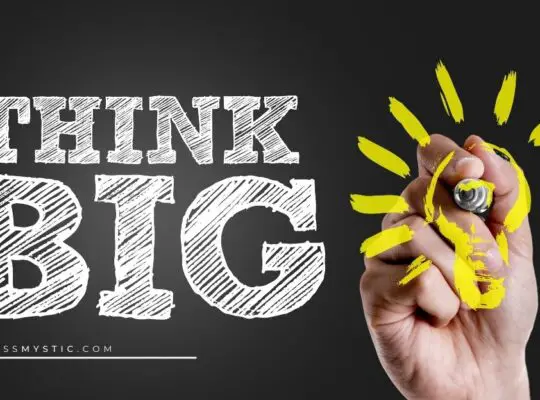What Is Body Language
Body language and facial expressions are essential sources of communication. We spend a lot of time trying to decipher what others’ nonverbal cues mean, and they are doing the same to us. Just as your voice, inflection, and words say a lot about how confident you are feeling in the moment, so does your body language and facial expressions. Learning to carry yourself with confidence will not only tell others how you are feeling but also bolster your personal power, as well.
This guide explores the many ways that body language communicate how we are feeling and what we are thinking. We will offer some insights that tell you what others may be thinking based on how you stand, move, and look. We will then share our best tips for changing your body language to exude confidence and strength in any situation.
Body language is exactly what its name implies. It is the language of your body. It is how you communicate your emotions, intention, and meaning through nonverbal cues, using your hands, posture, movement, and facial expressions. Your whole body is involved in communication with others; it can either illustrate or conceal your true mental state.
Think about what this person is communicating to others who see him. His hair is frazzled, looking like perhaps he forgot to comb it. He is wearing an expression that includes raised eyebrows, and he is avoiding eye contact with everyone. His shoulders are slumped, and he appears to be shuffling as he moves throughout his day. What does all of this tell you about this man? What can you learn about how he is feeling just from these cues? A lot!
There is little to suggest he is feeling confident or self-assured. He is likely stressed and worried, he feels either hopeless or exhausted, and he is not very motivated to engage in his life. All of this information comes just from watching him. And he may or may not be aware that he is communicating all this information to others, including complete strangers.
The Components of Body Language
Body language is not just one thing. It is how many different cues supply subtle and not-so-subtle information that allows others to infer meaning. Various components make up your body language and understanding them all is key to using yours to communicate confidence to others.
Facial expressions are a significant part of body language. We look at peoples’ faces all day, and we use signs we see on others’ faces to tell us how they are feeling. There are significant signs as well as micro expressions that play a vital role in our body language.
Body proxemics describes how you move your body through space. When you stand, gesture, lead, walk, or site, you are giving others clues to your internal thoughts and feelings through your body movements.
How you adorn your body also provides cues to others. Your hairstyle, clothing, clothing, and accessories are all part of what others see in you and play a role in their understanding of you. These body cues are important, along with the others already mentioned.
How Body Language Can Improve Your Life
It may seem like changing your body language only influences other people, but, in fact, it can also change you. Most people are not aware of all the ways that using positive body language, like making eye contact and having healthy posture, can improve their self-confidence and make Add to their sense of competence. Here are just a few of the many ways that using positive body language can improve your life.
Your body language can actually change your attitude. When you adjust your nonverbal cues, it can improve your mood as it influences your brain and your hormone levels. When you use positive body language, it creates an increase in your testosterone, which enhances your confidence. This effect is seen in both men and women.
Positive body language can also decrease your cortisol levels, which is the hormone released when you are under stress. Your positive body language helps you feel like you can solve your problems, which reduces your need to worry about possible outcomes. By feeling less stress, you can reduce the impact of harmful hormones like cortisol on your overall health and well-being.
Positive body language is perceived more favorably by others, which makes you more likable and approachable to others. Body language heavily influences how others feel about you, so using positive cues can help them to feel more favorable toward you.
Your positive body language conveys your competence to other people. When people watch your nonverbal cues, they feel like they can predict whether you are good at what you do and if they can trust you.
Finally, confident body language improves your ability to effectively communicate how you are feeling to others, which is also known as emotional intelligence. Positive body language has a positive influence on others, creating a ripple effect of positivity on those around you. This can enhance how you feel about others, as well.
Learning from Others
The first step to learning to use your body language to project your confidence is to learn to decode others’ nonverbal cues. Decoding is deciphering how others are feeling or what they are thinking based on the available information. You can learn a lot just by watching other people, even strangers, throughout your day.
Here is an example. If you notice that your colleague at work is sitting in a meeting with her arms folded in front of her body, that she has a flat affect or no facial expression, that she frequently turns her body slightly away from whomever is talking, and that she has been avoiding eye contact with everyone throughout the meeting, what would you say about her?
She is clearly upset, angry, or defensive about something. Granted, it may not be related to the topic of this meeting, but these are not signs that she is open and receptive to whatever is being discussed currently. If you are close to her, you could ask her after the meeting what is bothering her to see if your suspicions about her feelings were correct.
In contrast, when you notice that another colleague is sitting upright in her chair, making eye contact with the speaker, and smiling slightly, you understand that she is communicating her focus and attention on the meeting. She appears engaged and open to this topic.
Spend some time watching others in your life.
Pay careful attention to the facial expressions of others. How do people subtly communicate their fears, worries, passions, and joys through small but significant changes to their faces?
What can you learn about confidence by watching those in your life you think have the most strength?
Watching others can help you decode their nonverbal cues, and you can learn from them how to portray the confidence you feel inside but may not be showing to the world.
When Your Body Language Communicates Your Negative Emotions
There are many things you do that communicate to others that you are upset, angry, hurt, nervous, insecure, or hiding something. The first thing you want to do is start avoiding these gestures, expressions, and postures if you want people to see you as confident and genuine.
- If you are having a meaningful conversation, avoid putting your hands over your face. Covering or partially covering your face shows your nervousness to others. Make sure your face is clearly visible throughout the meeting or interaction.
- When you avoid looking at other people in the eye, you are perceived as anxious, shy, or even possibly less capable.
- Where people look while they are talking can tell you a lot about their feelings and meaning. Those who shift their gaze or avoid eye contact while talking are often perceived as untruthful or trying to deceive. Maintaining eye contact is critical when discussing important topics for this reason.
- Many people have a particular “tell” when they are holding something back. A common nervous tic when hiding something is to bite your lips or fold your lips into your mouth. This gesture is literally showing others that you are trying to keep something inside, which may mean you do not have the confidence to say what you mean or need.
- Frowns are not the only facial expression that tells others you are unhappy. When you keep your face neutral or without facial expression, you are also viewed as unhappy. In popular culture, this phenomenon in women has come to be known as “resting bitch face.”
- One way you may unintentionally be communicating with other people is by fidgeting. While you may be doing it because you are nervous, others often misconstrue this as impatience or a desire to be somewhere else.
- When meeting someone new, some people unconsciously raise their chin up. This signal is often read by others that you are conceited, so you may want to work on keeping that chin level with the ground if that is not how you are feeling.
- A clenched jaw is another signal that others may misinterpret. While you may be feeling stressed and clenching to try and manage that energy, others may see it as anger or frustration.
- Slouching your shoulders is usually a sign that you are overwhelmed, which does not show others that you are confident in your ability to overcome your obstacles.
Boosting Your Self-Confidence with Your Body Language
So, if your body language is telling other people so much about how you are feeling, perhaps it is time for it to start conveying the confidence you are feeling or, at least, the confidence you want other people to THINK you feel.
When you are trying to make a good first impression, give an important presentation, interview for a job, or meet a date for the first time, you want others to think you are confident and sure of your ideas and self. So, knowing how to carry yourself can help you project the right image for carrying out your goals.
Even when you are not feeling 100 percent confident, looking the part to others will make them think you are, which will help to boost your confidence anyway. So, changing your body language can indeed change your mood and outlook, helping you feel more confident than you are. No matter what you are feeling inside, people will respond to your actions and expressions on the outside.
Those who are the most successful understand this and project confidence and sureness, no matter the situation. You can take your cues from them and use these simple body language changes to show your determination to others, no matter the situation.
(1) Focus on Your Posture
Confidence starts with your posture. Standing or sitting confidently immediately signals to others that they should trust and listen to you. When standing, keep your back straight and your legs and feet in line with your shoulders. Keep your weight evenly spread across both feel with your shoulders back, and your head held high. It may help to imagine a string attached to the top of your head, and that it is being pulled toward the sky.
This type of assertive posture projects confidence and security. When you stand like this, you are open to greeting and talking with others, and they view you as approachable. When you stand tall, your arms are either comfortably at your side or you are using them to gesture and emphasize your point.
If you are sitting, you can still show your confidence with your posture. Place your rear all the way back in your chair and sit tall. Plant your feet firmly on the floor. Make sure your neck is relaxed and over your spine, not leaning forward. Not only will you look confident and composed, but this is actually the healthiest sitting position for your body. From this position, you are also keeping your airways open, which encourages proper breathing techniques, as well.
Whether sitting or standing, you want to show confidence by lifting your chin very slightly, keep your shoulders down and rolled back slightly, and opening up your chest. These cues show your positive self-esteem and confidence.
(2) Use Powerful Poses
If you want to exude confidence during significant events or while in important meetings, you can use your stance and various poses to show others your confidence and authority. Standing with your hands over your hips or one hip can signal trust and power. Gesturing with arms wide open also shows you speak your mind and are open to ideas.
Placing both hands on a desk or table and leaning over it shows you mean business. Leaning back in your chair with your hands behind your head shows others your confident in your ideas, too.
(3) Pay Attention to Facial Expressions
Spend some time looking in the mirror and getting to know what your resting, regular face looks like. This is how most people see you the majority of the time. Your relaxed face may appear to be overly stern, unapproachable, or unhappy. This is especially true if your mouth naturally turns down at the corners or if your eyes also naturally turn down. If people often ask you if you are okay or if you are upset, this is a hint that your everyday expression is coming across as negative.
There is nothing you can do to change your actual face, so knowing that some people may perceive you a certain way because of this can help you use your facial expressions to communicate a different notion. You can work on relaxing the muscles of your face to avoid a stern look.
You can also work on turning your mouth up just slightly at the corners, which immediately changes other micro-expressions on your face. Smiling all the time can lend you a look of crazed energy, but just small shifts around your mouth or eyes can change how people perceive you.
You should also be aware of how your face responds to other people when they are talking. Some people have a harder time controlling their facial reactions to things they do not agree with or unknown ideas.
Ask a trusted friend to watch you during a meeting or interaction and tell you later about how your facial expressions came across. Are you frowning a lot when others are talking? Does your brow furrow when you are upset? Once you know what you are doing, it is easier to learn to, friendlier expressions.
Smiling is vital for conveying your attitude and intentions. When your smile reaches your eyes, crinkling the skin around them, then others know your smile is genuine and sincere. When you smile genuinely, others are more likely to believe you are sincere and trustworthy.
(4) Maintain Eye Contact
If you want others to perceive you as confident, you need to focus on keeping eye contact with others. When you are talking with someone and lose eye contact, you are showing the other person that you are uncomfortable, submissive, or hiding something. You do not want to appear overly aggressive, so take your cues from the other person, but do not always be the first person to look away when talking.
When thinking about eye contact, beware of excessive blinking, which is a sign of nervousness. You may not even be aware that you are doing this. If you are concerned, have someone you know watch you to see if you are blinking more than usual, or record yourself in stressful situations to see if your rate seems normal.
(5) Master Your Hands
Your hands say a lot and being in control of your hands can help you send the right message to other people. Most gestures using a single finger, like jabbing or pointing, are considered aggressive and intimidating, but indicating with open palms or all your fingers closed together has the opposite effect. Open hands and palms facing up are almost universally received as positive and open.
Your hands can be used to gesture and emphasize, but when they are not in motion, they should remain still and flat. Fidgeting is a sign that you are nervous or unsure. Crossing your arms closes you off and shows your uncomfortableness, too.
Avoid playing with your hand, touching your face, biting your nails, tapping your pen, or playing with things in your pocket. All these signal that you are not confident in yourself. If you have any of these nervous tics, be sure to stay aware of them and resist the urge to engage in them whenever possible.
When listening or in conversation, gestures such as nodding and smiling show the other speaker that you are interested, that you understand than, and that you are engaged in your interchange. These convey respect, which helps others trust you more, too.
When greeting someone, your handshake says a lot about you. You want to use a firm, strong handshake to illustrate your confidence. Do not linger, and always look the person in the eye while you are shaking their hand.
(6) Put Others at Ease
If you are looking to make others feel more comfortable with you, you can try a technique where you effectively match your body language to theirs. While outright mimicry can be off-putting, subtle copying of someone’s posture, facial expressions, or gestures is a way to show them you are accepting and trying to build understanding.
Your body language is important not only when you are talking but also when you are listening. If you are listening to someone, cues like nodding, leaning forward, and tilting your head show them you are engaged, which helps them feel more comfortable with you.
(7) Quit Fidgeting
There are many ways that nervous energy manifests itself in your nonverbal cues. Fidgets include tapping, jiggling your foot, jingling coins, twirling your hair, or swaying. If you want to portray confidence, it is important that you stop fidgeting and be calm.
When you wriggle, you detract from your words and message, and you put others on edge, making them less likely to listen or take you seriously. Be aware of what your triggers are that often provoke your nervous habits and work hard to avoid these.
Checklist for Confident Body Language
If you have been working on your body language and want to ensure you are ready for your next big presentation, interview, or party, here are some things you can check to be sure you have all your bases covered.
- Are you keeping good eye contact?
- Are you standing or sitting up straight?
- Is your head held high?
- Are your hands still or being used to gesture instead of fidgeting?
- Do you appear relaxed and in control?
- Are your movements slow and deliberate?
- Is your handshake firm?
- Is your face relaxed and showing positive emotions?
- Are you aware of your facial expressions when others are talking?
- Are you using an open palm to show important things?
- Are you wearing clothes that make you feel comfortable and confident?
Tips for Learning New Body Language
As with learning any new skill, learning new body language techniques takes practice. If you have a big speech to make or presentation to give, it is important to practice not only the words you plan to say but also your posture, gestures, and other nonverbal cues that will convey your knowledge, confidence, and authority.
When trying to learn other, new behaviors, you can practice in everyday situations. Try out your new posture and relaxed face at the dinner table. Use lunch with your friends to work on showing others you are listening and focus on making eye contact. Use every available opportunity when interacting with others to practice your non-verbal communication skills.
Another helpful tool is to video record yourself and watch it to analyze your body language. Setting up a recorder during a presentation or speech, while you are working at your desk, or in other situations can provide you with helpful information about what you are communicating to others with your body language.
Asking for feedback or advice from trusted friends can also be helpful. Other people see you differently than you see yourself, so ask those closest to you what they think about specific habits you have.
Final Thoughts
Body language includes your facial expressions, posture, gestures, clothing, and other aspects of your appearance and movements that tell others what is happening inside your mind. Body language can make others feel they can trust and believe you, before you ever open your mouth. It is, therefore, critical that you learn to master your own body language if you want others to see your confidence and strength.
Using positive body language can not only show others that you are confident but can even make you believe you are, as well. Your body language and other nonverbal cues communicate a great deal to other people, and it is vital that you learn to use these tools to your advantage if you want others to perceive you as confident.
Whether you need to make a public speech, interview for a new job, go on an important date, or just have social anxiety and want to hang out with people more, learning to understand and control your body language will help others get to know you and assist you in better communicating with your audience.







